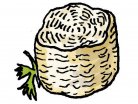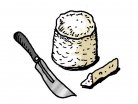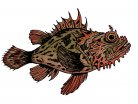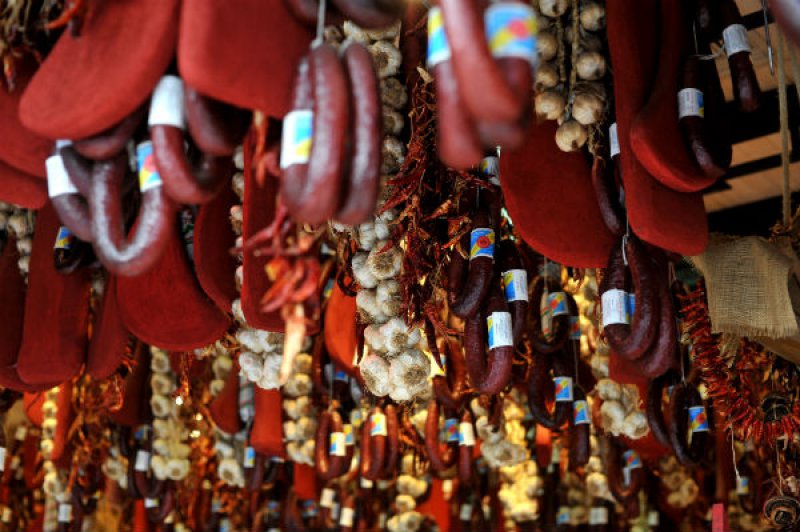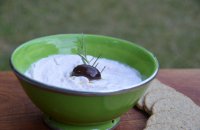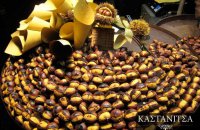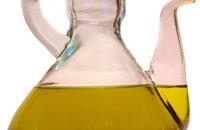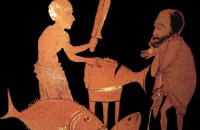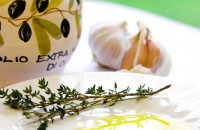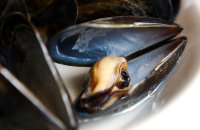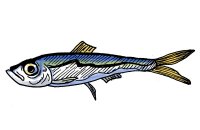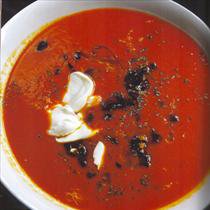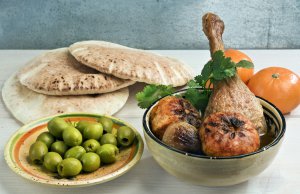Perhaps the myriad varieties of delicatessen that pervade the country's culture is most indicative of this.
Greek cuisine was, and still is, a combination of regional cuisines, blending a wide range of particularities that hail from disparate geographical positions and traditions. But throughout the ages, the common element within this broad range of Greek regional cuisines was the need to preserve food, especially meat, for the longest period possible. In the absence of modern technology, such endeavors always required considerable skill, wits, and knowledge.
Therefore, the ingenuity and the will of previous generations led to the creation of a particular brand of delicatessen unique to each region. Even though the raw materials are almost always the same throughout the country, the production process and names of the products have come to vary considerably.
As an ancient ritual mentioned by Homer, “Hirosfagia” takes place in villages all over Greece at the end of each year. Each household, after growing its own pig for a year, slaughters it and makes use of every single piece of the meat to produce cold cuts. Sausages, huge chunks of salted or smoked meat, and boiled meat with spices and other flavorings form the basis of the Greek delicatessen. There is an immense variety of preparation possibilities, all of which can be varied according to the type of meat used- pork, beef, or lamb are the major, but certainly not the only options.
Kavourmas is a special delicacy of Northern Greece. It is traditionally made from beef meat, but there are many variations with pork and lamb as well. It is produced from large pieces of meat boiled with leeks, onions, and spices, which are then preserved in the fat of the meat. As a result of these additions, the product has a pleasant spicy taste.
Even though pastourmas is thought to be a cold cut of Asian cuisine, it is produced in many regions in Greece as well.

These regions are those that near Turkey, such as Thrace, the N.E. Aegean islands, and the Dodecanese. Though the delicacy was originally formed from camel’s meat, it is today the product of salted beef meat. Covered by a layer of cumin, paprika, and all spice, it develops a characteristic aroma and taste. A popular dish that involves pastourma is the Caesaria pie, which is filled with slices of pastourma, kasseri cheese, and tomato. Interestingly, in the Dodecanese islands, pastourmas are made of goat meat.
Apaki is a Cretan delicacy comprised of salted pork meat. The meat is first marinated in vinegar, then smoked in aromatic herbs, and then wrapped in a layer of spices and flavorings. Such a preparation gives it a distinctive aroma and slightly sour taste.
Noumboulo is a typical Corfiot delicatessen. It is made from pork marinated in red wine, which is then smoked wrapped in animal intestines over aromatic herbs.
As the most famous cold cut of the Cyclades, lountza is produced from pork meat and somewhat similar to noumboulo. The meat is first salted, marinated in red wine, then smoked and finally wrapped in an intestine with spices and flavorings. It is left to mature from many months and then served in very thin slices.
Liokafto from the Cyclades are small pieces of meat- beef, pork, or lamb- marinated in salt, vinegar, and spices for one week, and then left to dry in the air for a considerable period of time.
Siglino from Mani is a salted pork meat, which will be boiled, sautéed, and then finally preserved in a mixture of its own fat and spices. Before it is served, it is sautéed slightly with orange peels, thus giving it its distinctive orange flavor.
The soutzouki from Crete is quite similar to the mani’s siglino in that it too is a sausage from pork meat with orange. The souzouki, however, is characterized by the oregano flavoring added to the delicacy afterward.
In fact, sausages are produced all over Greece with minor variations in the filling or the combination of spices and flavorings. In Thessaly, for example, sausages have leeks and therefore a sweeter taste, while in the Cyclades they are spiced with various plants and herbs. Throughout the Peloponnese they are made with orange, whereas in Andros they contain aniseed and are smoked. In Thrace, sausages resemble the soutzouki, a delicacy which in fact originated in Byzantine Constantinople.
The Varieties of Greek Delicatessen
Greek cuisine was, and still is, a combination of regional cuisines, blending a wide range of particularities that hail from disparate geographical positions and traditions.
Country:
Category:
Related Articles
Most Popular recipes










































